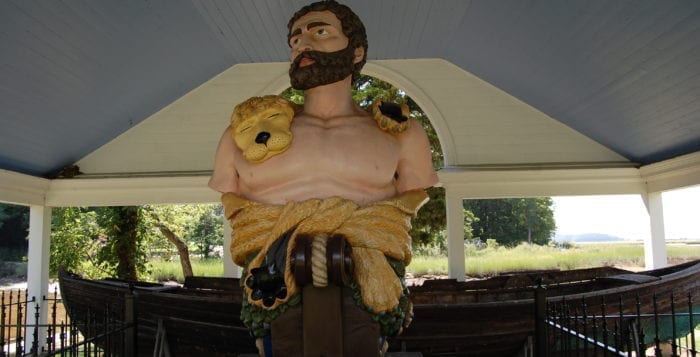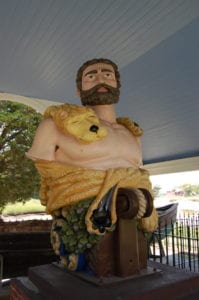By Beverly C. Tyler
Farming on Long Island has changed significantly over the past 350 years. The early settlers in Brookhaven used horses and oxen, raised cows, pigs and sheep and grew a wide variety of crops including wheat, Indian corn, barley, rye, flax, grasses, apple and pear trees. As wheat and Indian corn were the largest and most important crops, the local gristmill became the vital connection between the farm field and table.
For farmers, the miller and the blacksmith were the vital craftsmen. Brookhaven’s colonial blacksmiths worked in iron to produce farm tools and hardware. They made horseshoes and shod horses, oxen and occasionally cows. In 1681, John Thompson, Brookhaven’s blacksmith, made all the iron and steel work for a new Setauket gristmill run by John Wade.
By the end of the 18th century, increased agricultural productivity was becoming vital to Long Island farmers. By enriching the soil with seaweed, shells and manure, Suffolk County farmers increased the yield of each acre of wheat and other grains by two to three times. However, the dominance of wheat in Long Island agriculture was soon to change.
At the start of the 19th century, New York City had a number of tidal gristmills along the East River to grind grain. Grain and flour came from Long Island and as far away as Ohio. Grain from the west, transported by wagon, was more expensive than Long Island grain. This, however, was also soon to change.
With the end of the War of 1812, trade with Europe and Great Britain resumed. Europeans remained willing to pay high prices for American cotton and wheat. Great Britain passed the “Corn Law of 1815,” placing a tax on the import of grains. This was to keep the price of grains up and preserve the profits of the “landed gentry” (the British noblemen who owned most of the land).
In 1812 the United States exported 1.3 million barrels of flour to Britain. In 1816 that fell to about half (620,000 barrels). Long Island farmers still earned their living by raising grain and herding livestock, as they had since the 17th century. Now they began to have a wider market through New York City.
The Erie Canal forever changed Long Island’s relationship with New York City. Begun in 1817, the Erie Canal was fully completed in 1825 from Buffalo to Albany — a distance of 363 miles — establishing a water commerce route between the Hudson River and the Great Lakes.
The effect of the canal on Long Island and New York City population and commerce was dramatic. By 1826, 42 barges a day carried 1,000 passengers, 221,000 barrels of flour, 435,000 gallons of whiskey and 562,000 bushels of wheat. Shipping costs from Lake Erie to Manhattan plummeted from $100 a ton to less than $9.00.
By 1830, due largely to the Erie Canal, New York, which had always been behind Philadelphia and Boston in exports, was exporting four times as much as Philadelphia. By 1850, New York’s exports had grown another 160 percent.
On Long Island, wheat, barley, corn and rye proved unable to compete with cereal grains from the West. By 1836, with a population that more than doubled to over 275,000 since 1820 and shipping that tripled over the same period, Long Island farmers, seeing their market disappear, switched to raising potatoes, cabbage, peas, beans, asparagus and tomatoes for booming Manhattan and Brooklyn.
To be continued next time: A trip on the Erie Canal.
Beverly Tyler is the Three Village Historical Society historian and author of books available from the Three Village Historical Society, 93 North Country Road, Setauket, NY 11733. Tel: 631-751-3730. WWW.TVHS.org.





 His struggles made him the perfect embodiment of an idea the Greeks called pathos, the experience of virtuous struggle and suffering that would lead to fame and, in Hercules’ case, immortality.
His struggles made him the perfect embodiment of an idea the Greeks called pathos, the experience of virtuous struggle and suffering that would lead to fame and, in Hercules’ case, immortality.














